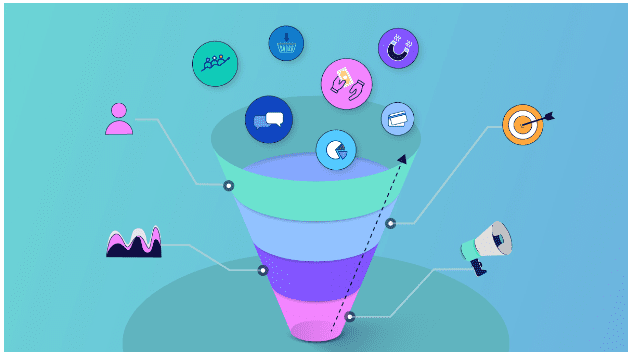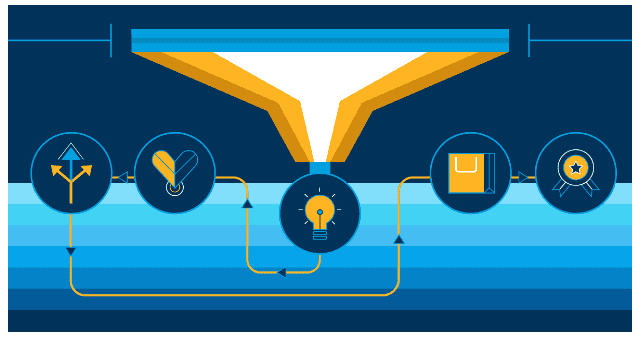Table of Contents
ToggleEffective bottom-of-the-funnel (BOFU) content is crucial for boosting conversions and closing deals. BOFU content should be designed to speak directly to potential customers who are already familiar with your brand and are actively considering purchasing your product or service.
One effective strategy for BOFU content is to focus on your product or service’s specific benefits and features while also addressing potential customers’ concerns or objections. This can include things like case studies, testimonials, and product demos.
In addition, it’s essential to make the purchasing process as easy as possible. This can include clear calls-to-action, easy-to-use checkout processes, and a streamlined customer service experience.
Creating effective BOFU content can increase conversions and close deals while building a more robust and loyal customer base.
Introduction to Bottom of the Funnel Content
Bottom-of-the-funnel (BOFU) content is crucial to any successful marketing strategy. It refers to the range designed to target customers already familiar with your brand and actively considering purchasing your product or service.
At the BOFU stage, customers are typically looking for specific information to help them make purchasing decisions. This might include detailed product information, pricing details, customer reviews, and case studies.
Effective BOFU content should be designed to provide potential customers with the information they need to make an informed decision while addressing any concerns or objections. This can build trust and credibility with your target audience while increasing conversions and closing more deals.
BOFU content is a crucial part of the customer journey and can be a powerful tool for building strong and lasting relationships with your target audience.
Defining bottom-of-the-funnel content and its role in converting leads to customers
Bottom-of-the-funnel (BOFU) content refers to content that is specifically designed to target potential customers who are already familiar with your brand and are actively considering making a purchase. At this stage, customers often seek specific information that can help them decide, such as pricing, features, and reviews.
The role of BOFU content in converting leads to customers is crucial. By providing potential customers with the information they need to make an informed decision, BOFU content can help build trust and credibility with your target audience, ultimately leading to more conversions and sales.
Effective BOFU content should be highly targeted and personalized to the needs and interests of your potential customers. It should also address any concerns or objections they may have about your product or service and provide clear calls to action that encourage them to take the next step in the purchasing process.
Overall, BOFU content is critical in converting leads to customers by providing the information and reassurance potential customers need to make an informed decision and building trust and credibility with your target audience.

The benefits and challenges of using the bottom of the funnel content in marketing and sales efforts
The bottom-of-the-funnel (BOFU) content can offer several benefits to marketing and sales efforts. For example, BOFU content is highly targeted and personalized to potential customers already familiar with your brand and actively considering purchasing. This makes it more effective at driving conversions and closing deals than broader, top-of-the-funnel content.
BOFU content can also help to build trust and credibility with your target audience by providing them with the information and reassurance they need to make an informed decision. This leads to more satisfied customers and increased loyalty.
However, some challenges are associated with using BOFU content in marketing and sales efforts. For example, creating effective BOFU content can be time-consuming and require significant resources. In addition, it can take a lot of work to measure the impact of BOFU content on conversions and sales, as it often requires a longer sales cycle and multiple touchpoints with potential customers.
Another challenge is ensuring that BOFU content is relevant and engaging for potential customers. This requires a deep understanding of your target audience and their specific needs and pain points and a commitment to ongoing testing and optimization.
While challenges are associated with using BOFU content in marketing and sales efforts, the potential benefits of driving more conversions and building stronger customer relationships make it a critical component of any successful marketing strategy.
Critical Elements of Effective Bottom of the Funnel Content
Effective bottom-of-the-funnel (BOFU) content should be designed to speak directly to potential customers already familiar with your brand and actively considering purchasing your product or service. Here are some critical elements of effective BOFU content:
- Specific benefits and features: BOFU content should focus on the particular advantages and features your product or service provides while addressing potential customers’ concerns or objections.
- Case studies and testimonials: Including case studies and testimonials can help to build trust and credibility with your target audience by providing real-world examples of how your product or service has helped other customers.
- Product demos and trials: Offering product demos or trials can give potential customers a firsthand experience of your product or service, effectively addressing any remaining concerns or objections.
- Clear calls-to-action: BOFU content should include clear calls-to-action that encourage potential customers to take the next step in the purchasing process, such as signing up for a free trial or scheduling a demo.
- Easy purchasing process: It’s essential to make the purchasing process as easy as possible, with transparent pricing information, easy-to-use checkout processes, and a streamlined customer service experience.
By including these key elements in your BOFU content, you can create a compelling and engaging experience for potential customers that helps build trust, address concerns, and drive more conversions and sales.
Developing a deep understanding of target audience needs and decision-making criteria.
Understanding your target audience’s needs and decision-making criteria is critical for creating effective marketing and sales strategies. Here are some essential steps to help you develop this understanding:
- Conduct market research: Start by conducting market research to gather information about your target audience, such as demographics, interests, and pain points. This can be done through surveys, focus groups, and online analytics tools.
- Develop buyer personas: Use the information gathered through market research to create detailed buyer personas representing your target audience. These personas should include information about their goals, challenges, and decision-making criteria.
- Map the customer journey: Map out the customer journey, from initial awareness to final purchase, and identify the touchpoints where your target audience is most likely to engage with your brand.
- Analyze customer data: Use customer data, such as purchase history and website behavior, to gain insights into your target audience’s needs and preferences.
- Stay up-to-date with industry trends: Stay up-to-date with industry trends and changes in your target audience’s needs and preferences. Be willing to adapt your marketing and sales strategies accordingly.
By taking these steps, you can develop a deep understanding of your target audience’s needs and decision-making criteria, which can help you create more effective marketing and sales strategies that resonate with your target audience and ultimately drive more conversions and sales.

Creating compelling and persuasive content that addresses specific customer concerns and objections
Creating compelling and persuasive content that addresses specific customer concerns and objections is crucial to any successful marketing and sales strategy. Here are some critical steps to help you create this type of content:
- Identify customer concerns and objections: Identify potential customers’ most common problems and complaints about your product or service. This can be done through customer feedback, online reviews, and customer support interactions.
- Address concerns and objections directly: Create content that directly addresses these concerns and complaints, using language that is clear, concise, and easy to understand. Use real-world examples and case studies to illustrate how your product or service can help address these concerns.
- Use social proof: Incorporate social proof, such as customer testimonials and case studies, to help build trust and credibility with your target audience.
- Highlight unique selling points: Highlight the unique selling points of your product or service and how they address specific customer needs and pain points.
- Use clear and compelling calls-to-action: Use clear and persuasive calls-to-action to encourage potential customers to take the next step in purchasing.
Creating compelling and persuasive content that addresses specific customer concerns and objections can build trust and credibility with your target audience and ultimately drive more conversions and sales.
Providing clear and actionable information about product or service features, pricing, and benefits
Providing clear and actionable information about product or service features, pricing, and benefits is crucial for converting potential customers into actual customers. Here are some critical steps to help you provide this information effectively:
- Highlight essential product or service features: Highlight the key elements of your product or service, using language that is easy to understand and emphasizes the benefits to the customer.
- Provide detailed pricing information: Be transparent and upfront about pricing, including the cost of your product or service, any discounts or promotions, and any additional fees or charges.
- Emphasize the benefits: Emphasize the help of your product or service, highlighting how it can solve specific customer pain points and meet their needs.
- Use visual aids: Use visual aids, such as infographics and videos, to help convey information clearly and engagingly.
- Provide clear calls-to-action: Provide clear calls-to-action that encourage potential customers to take the next step in the purchasing process, such as signing up for a free trial or scheduling a demo.
By providing clear and actionable information about your product or service features, pricing, and benefits, you can help potential customers make informed decisions and feel confident about their purchasing choices. This leads to more conversions and sales and increased customer loyalty and satisfaction.
Leveraging testimonials, case studies, and other social proof to increase trust and confidence in the brand
Leveraging testimonials, case studies, and other social proofs can increase your brand’s trust and confidence. Here are some critical steps to help you leverage social proof effectively:
- Collect testimonials and case studies: Collect testimonials and case studies from satisfied customers that highlight the benefits of your product or service. Use these to showcase how your brand has helped others solve specific problems and achieve their goals.
- Use social media: Use social media to showcase your brand’s positive reviews and ratings and any industry awards or recognitions.
- Highlight customer success stories: Highlight customer success stories that showcase how your product or service has helped customers achieve their goals.
- Incorporate social proof into your website: Incorporate social proof into your website, such as customer reviews and ratings, and prominently display any awards or recognitions.
- Use visual aids: Use visual aids, such as images and videos, to showcase social proof engagingly and compellingly.
By leveraging testimonials, case studies, and other social proof, you can increase trust and confidence in your brand and ultimately drive more conversions and sales. This can also help to build a more robust and loyal customer base, as customers are more likely to trust and recommend a brand with a strong track record of delivering positive results.

Best Practices for Creating and Implementing Bottom-of-the-Funnel Content
Creating and implementing effective bottom-of-the-funnel (BOFU) content is critical for driving conversions and closing deals. Here are some best practices for developing and implementing BOFU content:
- Focus on the customer: BOFU content should be designed to speak directly to potential customers, addressing their specific needs and concerns and providing the information they need to make an informed decision.
- Be transparent and upfront: Be transparent and upfront about pricing, features, and benefits, providing clear and actionable information that helps potential customers make informed decisions.
- Use social proof: Leverage social proof, such as customer testimonials and case studies, to build trust and credibility with your target audience.
- Optimize for search: Optimize BOFU content for search engines by using relevant keywords and providing high-quality content that offers value to your target audience.
- Clear calls-to-action: Provide clear and compelling calls-to-action that encourage potential customers to take the next purchase step, such as signing up for a free trial or scheduling a demo.
- Test and optimize: Continuously test and optimize your BOFU content to improve its effectiveness and ensure it resonates with your target audience.
By following these best practices, you can create and implement BOFU content that is highly targeted, effective, and engaging, helping to drive more conversions and build stronger customer relationships.
Final Thoughts
Effective bottom-of-the-funnel (BOFU) content is critical to successful marketing and sales strategies. By focusing on the specific needs and concerns of potential customers who are already familiar with your brand and actively considering purchasing, BOFU content can help build trust and credibility, address concerns and objections, and ultimately drive more conversions and sales.
Critical elements of effective BOFU content include specific benefits and features, case studies and testimonials, product demos, and trials, clear calls to action, and a streamlined purchasing process. In addition, leveraging social proof, optimizing for search, and continuously testing and optimizing content can help to improve its effectiveness and resonance with the target audience.
By creating and implementing effective BOFU content, businesses can build stronger and more loyal customer relationships, increase conversions and sales, and achieve tremendous success and growth.
- Success vs. Significance: Understanding the Difference and Achieving Both - October 1, 2023
- 8 Steps to SaaS Success: From Idea to Business - September 30, 2023
- The Importance of Testing in SaaS: Ensure Quality and Success - September 29, 2023